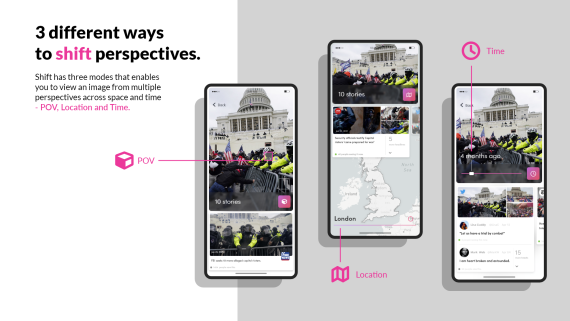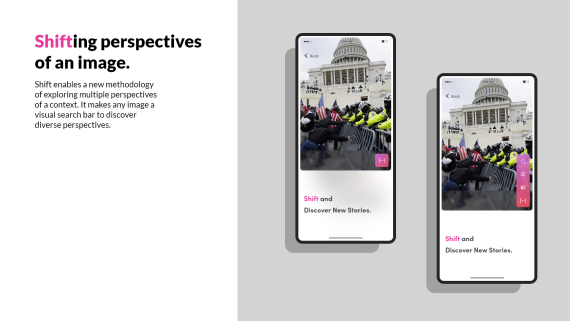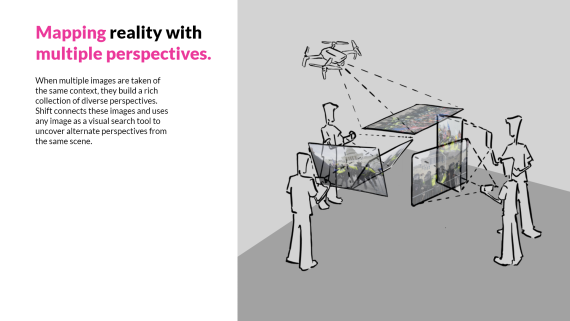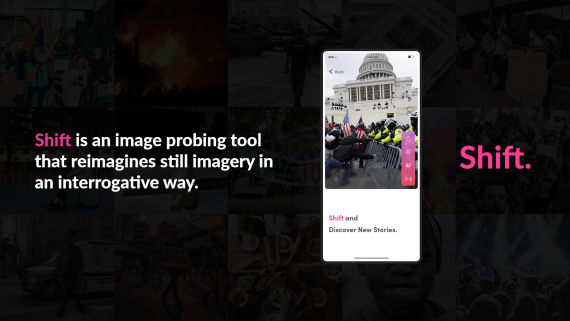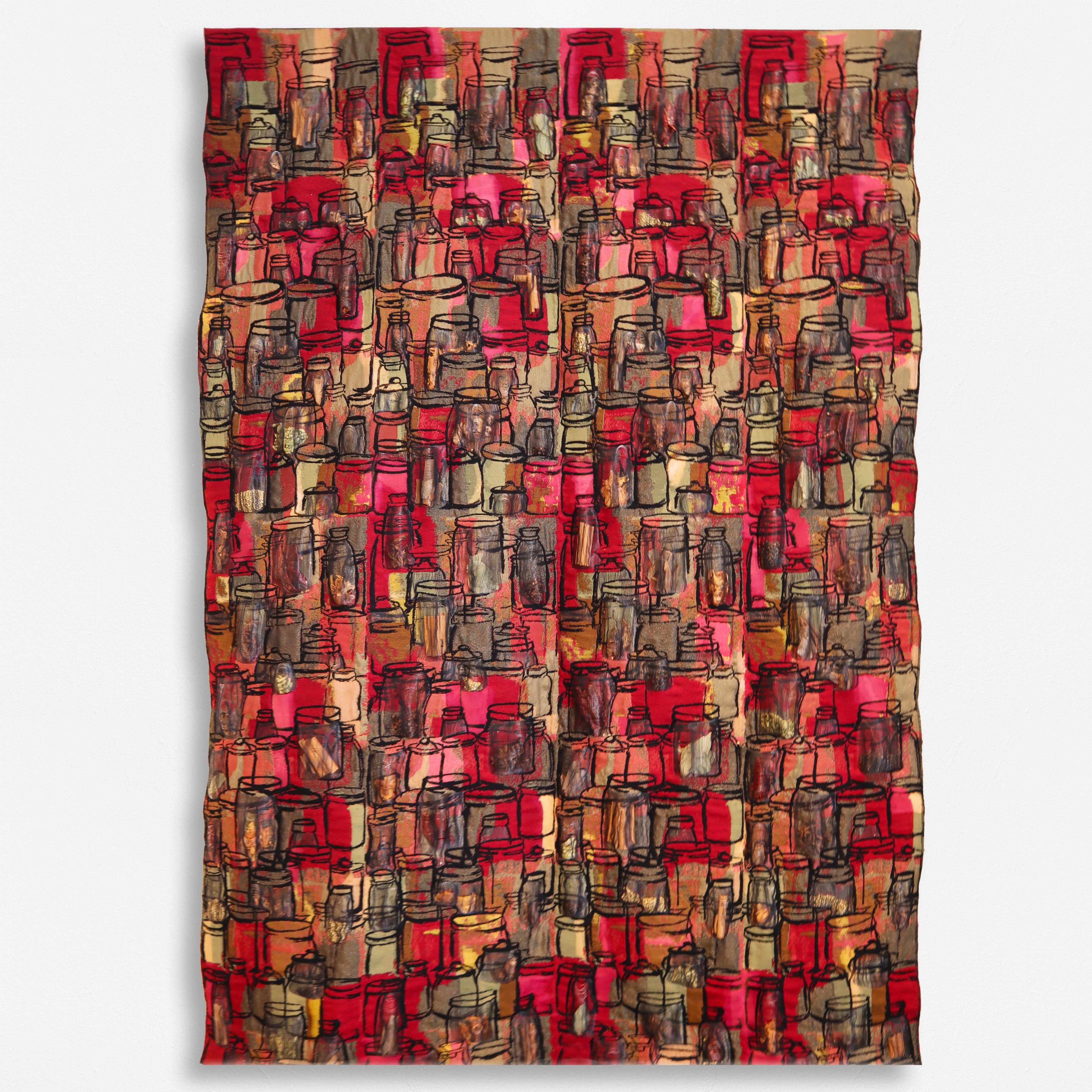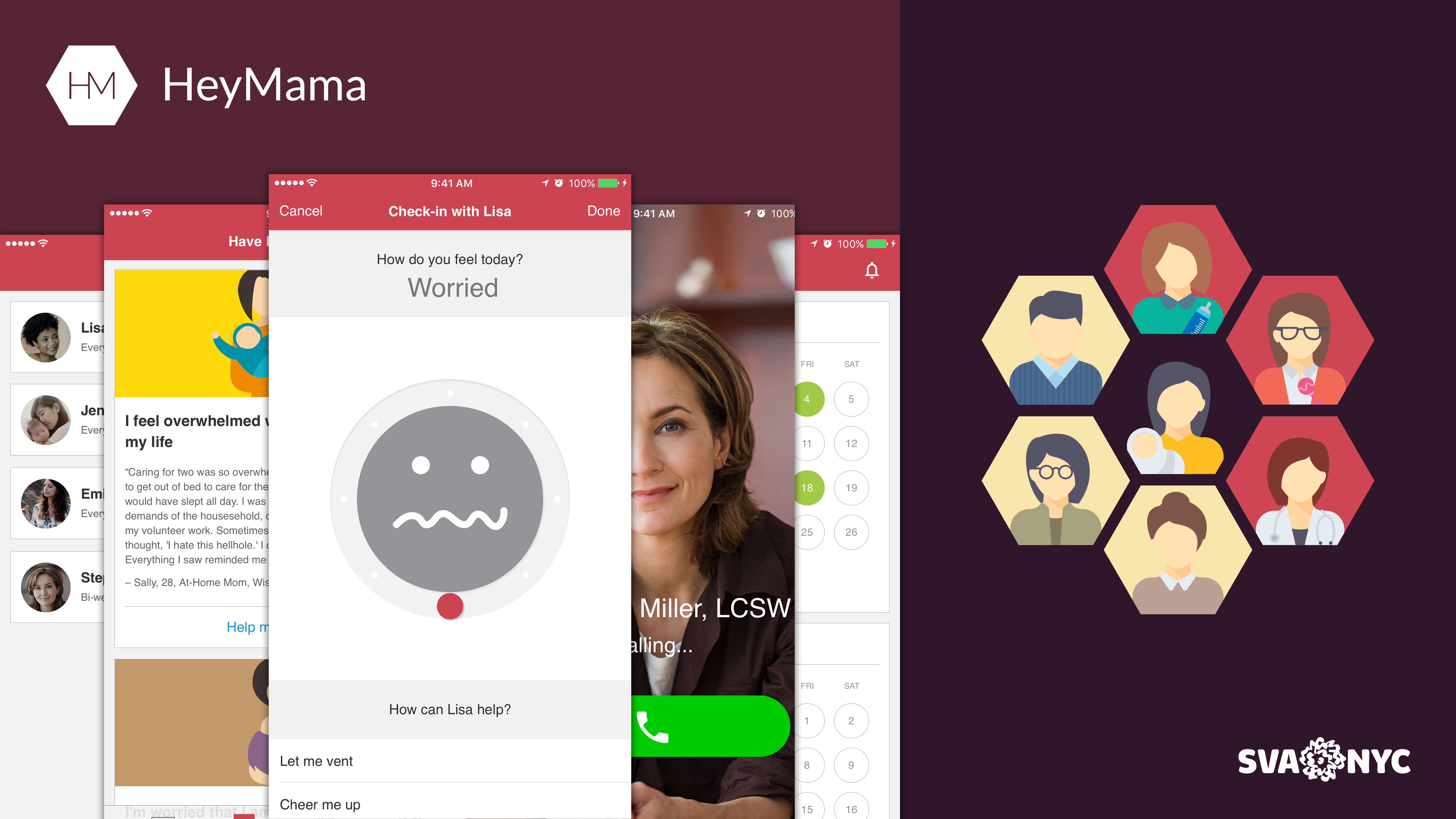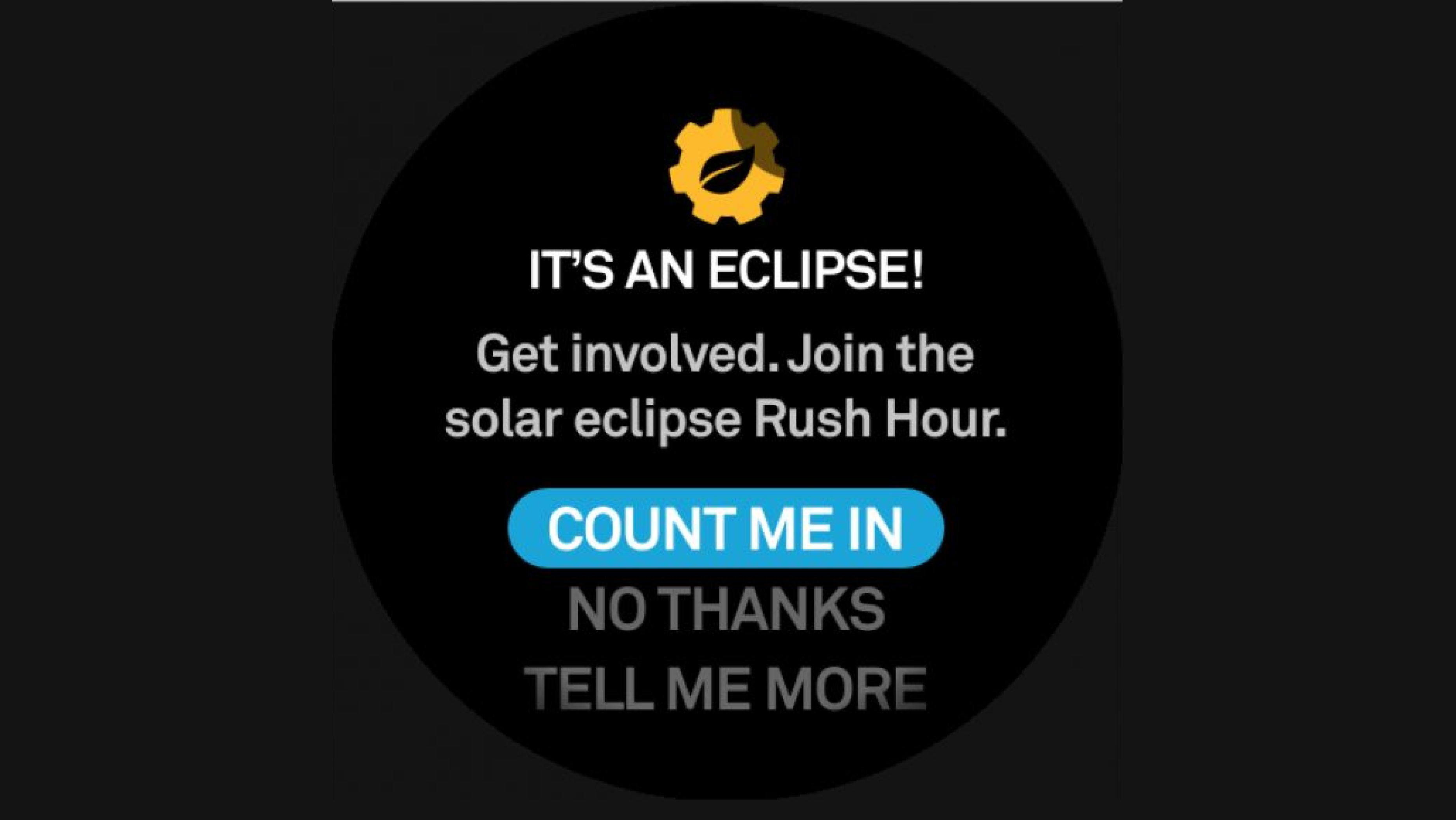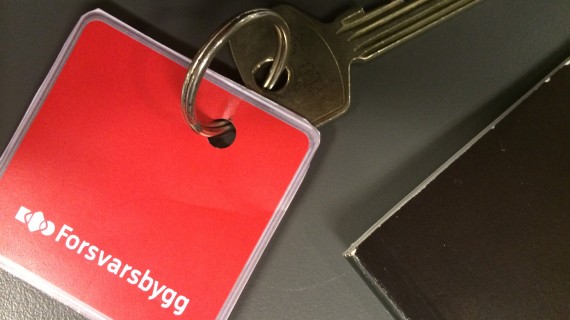SHIFT - An alternate future for experiencing reality in digital imagery
Team
Company | Institution
Category
Type
Project description
A picture is worth 1000 words. Great visuals can enhance, dramatize and even bend the narrative. From historical photos to modern-day digital images made of millions of pixels, images have always been instrumental in shaping our visual understanding of the world around us. As much as they have been instrumental in shaping reality, easy access to image manipulation has also resulted in widespread misinformation. When we can fake anything, honest representation of reality in images has become a complex problem to crack.
After multiple design explorations, I realized a need for a fundamental change in our interaction with images. This project explored how any image could be used to expose the viewer to multiple perspectives. It resulted in the SHIFT concept, which re-imagines the future of still imagery in an 'interrogative' way.
SHIFT is an image probing tool that enables a new methodology of exploring multiple perspectives of a context. When multiple images are taken of the same context, they build a rich collection of diverse perspectives. Shift connects these images and uses any image as a visual search tool to uncover alternate perspectives from the same scene. It thus helps people to discover alternate ways of seeing the same context. It is not an attempt to challenge image manipulation technology but to use images as a means to develop a more informed understanding of the reality they represent.
Visual imagery forms an integral part of our everyday record keeping. We use them to capture our memories, share our emotions, and have a visual understanding of people, events, and moments. In many instances, these snapshots are also our sole reference towards a reality we couldn’t experience in person. The sheer number of photos we take every day shows how much our understanding of everyday life is shaped by still imagery. Yet, they are also one of the easily accessible sources of misinformation and misinterpretation. If you use social media, the chances are that you see or forward some of the more than billions of images, and it becomes an arduous task to decide which among them can be trusted and which cannot be.
While one part of the solution focuses on content verification tools, it has become equally important to build a media-literate generation. Ultimately, one of the best lines of defense and someone who needs to be empowered is the viewer. As a design intervention towards a media literate future, it is now imperative more than ever to critically examine the images we come across. This project explored how to empower the viewers to develop an informed understanding of the images they come across.
My research started with understanding how people interact with images in their daily lives and what kind of relationship they form with visual media. I noticed that for most research participants, images were part of the content that passively support a narrative. Even when it adds a visual dimension to a narrative, they rarely see it as an entity that adds value. And people who have grown up with a single source of information like newspaper media often need someone’s help to see through the manipulation. All these pointed out that we need tools that empower us to see digital images critically and discover new stories.
SHIFT is an image probing tool that enables a new methodology of exploring multiple perspectives of a context. It is designed to keep you informed of alternate realities out there. When multiple images are taken of the same context, they build a rich collection of diverse perspectives. SHIFT connects these images and uses any image as a visual search tool to uncover alternate perspectives from the same scene. It thus helps people to discover alternate ways of seeing the same context.
Figuratively speaking, SHIFT is a cartography of perspectives that maps all the viewpoints of the same scene into an image. It aims to reimagine the future for still imagery in an interrogative way. It is a universe next door in which images become a visual search bar to discover new realities. It is a world of connected photos that forms a montage of multiple perspectives. The SHIFT thus gives access to a deeper and more nuanced reality than what we perceive.
After multiple design explorations, I realized a need for a fundamental change in our interaction with images. This project explored how any image could be used to expose the viewer to multiple perspectives. It resulted in the SHIFT concept, which re-imagines the future of still imagery in an 'interrogative' way.
SHIFT is an image probing tool that enables a new methodology of exploring multiple perspectives of a context. When multiple images are taken of the same context, they build a rich collection of diverse perspectives. Shift connects these images and uses any image as a visual search tool to uncover alternate perspectives from the same scene. It thus helps people to discover alternate ways of seeing the same context. It is not an attempt to challenge image manipulation technology but to use images as a means to develop a more informed understanding of the reality they represent.
Visual imagery forms an integral part of our everyday record keeping. We use them to capture our memories, share our emotions, and have a visual understanding of people, events, and moments. In many instances, these snapshots are also our sole reference towards a reality we couldn’t experience in person. The sheer number of photos we take every day shows how much our understanding of everyday life is shaped by still imagery. Yet, they are also one of the easily accessible sources of misinformation and misinterpretation. If you use social media, the chances are that you see or forward some of the more than billions of images, and it becomes an arduous task to decide which among them can be trusted and which cannot be.
While one part of the solution focuses on content verification tools, it has become equally important to build a media-literate generation. Ultimately, one of the best lines of defense and someone who needs to be empowered is the viewer. As a design intervention towards a media literate future, it is now imperative more than ever to critically examine the images we come across. This project explored how to empower the viewers to develop an informed understanding of the images they come across.
My research started with understanding how people interact with images in their daily lives and what kind of relationship they form with visual media. I noticed that for most research participants, images were part of the content that passively support a narrative. Even when it adds a visual dimension to a narrative, they rarely see it as an entity that adds value. And people who have grown up with a single source of information like newspaper media often need someone’s help to see through the manipulation. All these pointed out that we need tools that empower us to see digital images critically and discover new stories.
SHIFT is an image probing tool that enables a new methodology of exploring multiple perspectives of a context. It is designed to keep you informed of alternate realities out there. When multiple images are taken of the same context, they build a rich collection of diverse perspectives. SHIFT connects these images and uses any image as a visual search tool to uncover alternate perspectives from the same scene. It thus helps people to discover alternate ways of seeing the same context.
Figuratively speaking, SHIFT is a cartography of perspectives that maps all the viewpoints of the same scene into an image. It aims to reimagine the future for still imagery in an interrogative way. It is a universe next door in which images become a visual search bar to discover new realities. It is a world of connected photos that forms a montage of multiple perspectives. The SHIFT thus gives access to a deeper and more nuanced reality than what we perceive.

